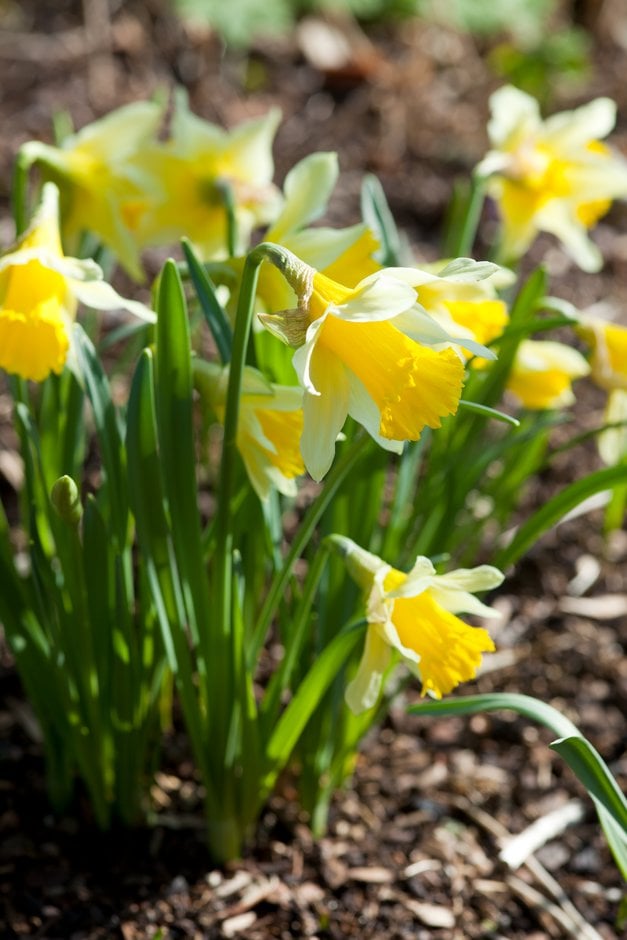Narcissus pseudonarcissus (13)
wild daffodil
A small trumpet daffodil up to 35cm in height, with usually glaucous foliage and flowers 4-6cm in width, with deep yellow trumpet and pale yellow perianth segments
Other common names
averillbell rose
see morebulrose
chalice flower
common daffodil
daffy-down-dilly
eggs and bacon
Lent cock
Lent lily
Lent rose
trumpet narcissus
yellow crowbell
cennin pedr
Size
Ultimate height
0.1–0.5 metresTime to ultimate height
2–5 yearsUltimate spread
0–0.1 metreGrowing conditions
Moisture
Moist but well–drained, Well–drainedpH
Acid, Alkaline, NeutralColour & scent
| Stem | Flower | Foliage | Fruit | |
| Spring | Yellow | Green Grey Silver | ||
|---|---|---|---|---|
| Summer | ||||
| Autumn | ||||
| Winter |
Position
- Full sun
- Partial shade
Aspect
South–facing or West–facing or North–facing or East–facing
Exposure
Exposed or Sheltered Hardiness
H6Botanical details
- Family
- Amaryllidaceae
- Native to GB / Ireland
- Yes
- Foliage
- Deciduous
- Habit
- Tufted
- Potentially harmful
- Harmful if eaten, skin irritant. Wear gloves and other protective equipment when handling. Pets (dogs, cats, tortoises): Harmful if eaten, skin irritant. For further information and contact numbers regarding pets, see the HTA guide to potentially harmful plants
- Genus
Narcissus are bulbous herbaceous perennials with linear leaves and leafless stems bearing flowers, which may be solitary or in umbels, with 6 spreading perianth segments and a cup or trumpet-shaped corona
- Name status
Correct
- Horticultural Group
- Division 13 daffodils include all natural species and their varieties and forms
- Plant range
- W Europe
How to grow
Cultivation
Plant at one and a half to two times its own depth in autumn. Will tolerate most soils but prefers moderately fertile, well-drained soil that is constantly moist during the growing season. Excellent for naturalising. See daffodil cultivation for further advice
Propagation
Propagate by removing offsets as the leaves fade in early summer
Suggested planting locations and garden types
- City and courtyard gardens
- Cottage and informal garden
- Patio and container plants
- Wildflower meadow
- Low Maintenance
- Flower borders and beds
- Cut flowers
Pruning
No pruning required
Pests
May be susceptible to slugs, narcissus bulb fly, narcissus eelworm, and bulb scale mite
Diseases
May be susceptible to narcissus basal rot, narcissus leaf scorch or daffodil viruses
Get involved
The Royal Horticultural Society is the UK’s leading gardening charity. We aim to enrich everyone’s life through plants, and make the UK a greener and more beautiful place.
